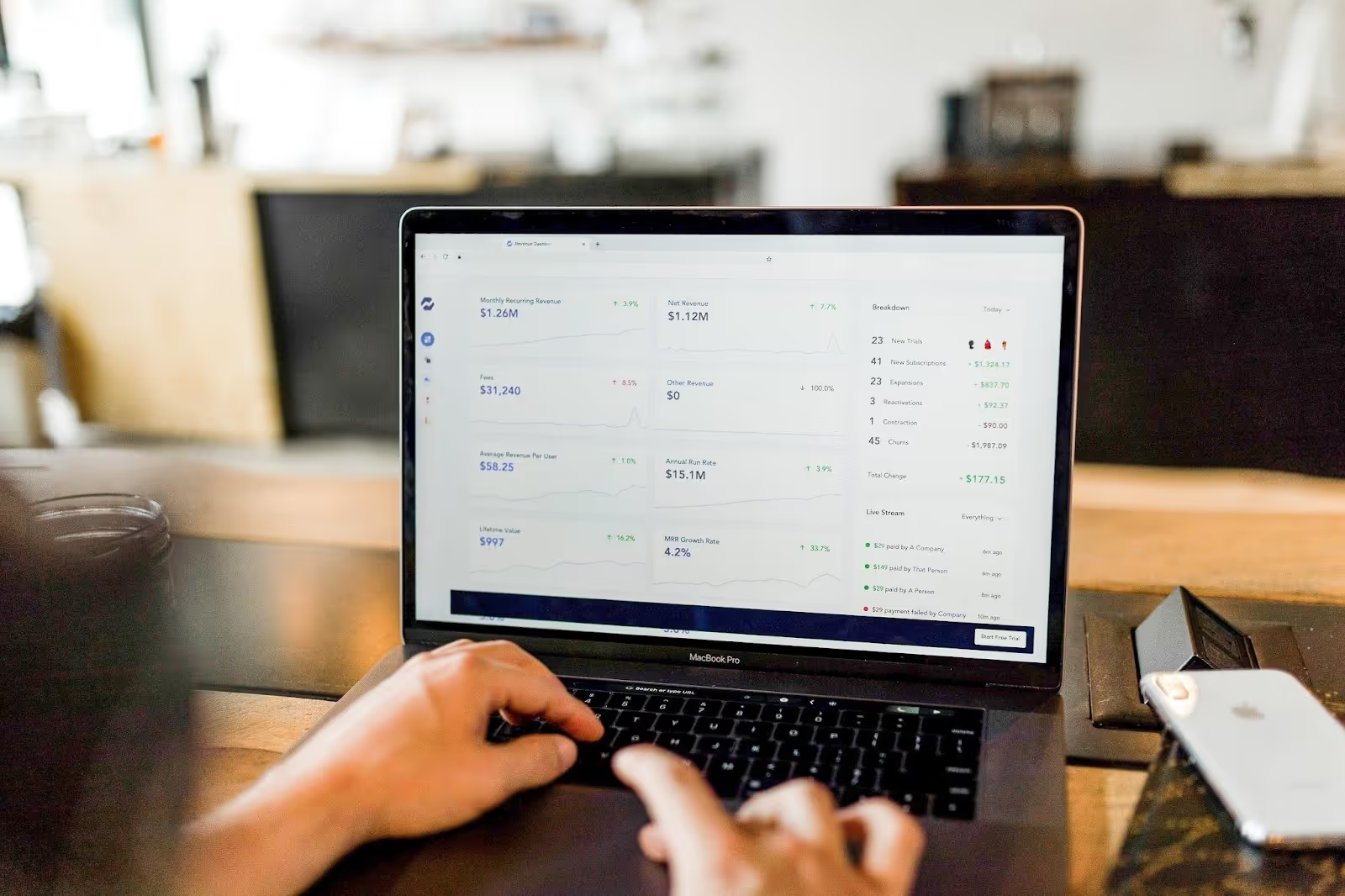Empowering Teams With Automated Cloud Accounting Software
Discover how essential workplace tools embedded in our cloud accounting software can empower and motivate your accounting team, leading to greater efficiency.
The Evolution of Business Accounting Systems: Adapting to Modern Financial Needs

Accounting software is a specialized tool designed to manage, record, and process the financial transactions of an organization. This includes critical functions such as managing fixed assets, overseeing expense and revenue management, and handling accounts receivable and payable. At its core, it facilitates subledger accounting, providing vital reporting and analytics to track an organization's financial health.
In this article
Accounting software is a specialized tool designed to manage, record, and process the financial transactions of an organization. This includes critical functions such as managing fixed assets, overseeing expense and revenue management, and handling accounts receivable and payable. At its core, it facilitates subledger accounting, providing vital reporting and analytics to track an organization's financial health.
The software maintains a comprehensive record of all financial transactions, which are then used to update the general ledger in real time. This feature is crucial for CFOs, treasurers, and controllers, as it provides immediate access to accurate financial data, allowing for timely and informed decision-making. Additionally, it offers P&L owners detailed insights into their operational performance, aiding in strategic planning and management.
Integral to the production of essential financial documents, accounting software enables the creation of quarterly and annual financial statements. These include balance sheets, income statements, statements of cash flows, and statements of stockholders’ equity, all of which are fundamental for financial reporting and analysis.
Beyond its standalone capabilities, accounting software often forms a key element of an Enterprise Resource Planning (ERP) system. ERP systems bring together critical business functions such as accounting, financial planning and analysis (FP&A), supply chain management, inventory management, and procurement under a unified platform. With native integration, a common user interface, and a shared data model, ERP systems streamline business operations, eliminating the need for multiple, siloed systems and ensuring cohesive data management across the organization.

Transaction Recording: Users input financial transactions into the software. This can include sales, purchases, payments, and receipts.
Document Scanning and Uploading: Modern software may allow you to scan documents like invoices and receipts, which it then translates into data using OCR (Optical Character Recognition) technology.
Chart of Accounts: Transactions are categorized based on a predefined chart of accounts, which can include various income, expense, asset, liability, and equity accounts.
Subledger Maintenance: For detailed tracking, transactions are recorded in corresponding subledgers (like accounts payable, accounts receivable).
Automated Calculations: The software automatically calculates totals, tax amounts, and other financial data.
Reconciliation: It matches transactions with bank statements or other financial records to ensure accuracy.
Financial Reports: It generates various reports such as profit and loss statements, balance sheets, and cash flow statements.
Analytics: Some software offers analytics tools for deeper insights into financial data and trends.
Regulatory Compliance: The software helps maintain compliance with accounting standards and financial regulations.
Tax Preparation: It assists in preparing and filing tax returns, calculating tax liabilities accurately.
Employee Payments: The software manages payroll calculations, tax withholdings, and payment distributions.
Reporting: Generates payroll-related reports and tax forms.
Third-party Integration: Accounting software often integrates with other business tools (CRM, inventory systems) for a streamlined workflow.
Data Synchronization: Ensures that all financial data across systems are updated and synchronized.
Data Security: Implements security measures like encryption to protect financial data.
Backup: Regularly backs up data to prevent loss in case of system failures.
Access Control: Sets up user roles and permissions to control access to sensitive financial data.
Audit Trail: Keeps a record of all changes made within the software for transparency and accountability.
Software Updates: Regular updates are released to enhance features, fix bugs, and update compliance requirements.
User Support and Maintenance: Provides ongoing user support and maintenance services.
By following these steps, accounting software efficiently manages a business's financial processes, from recording transactions to generating reports, ensuring accuracy, compliance, and informed financial decision-making.

Introducing accounting software into an accounting firm is a crucial step towards modernizing and optimizing its financial operations. This implementation process goes beyond just selecting a type of accounting software; it's about integrating a comprehensive business accounting system that aligns with the firm's specific needs. The transition includes evaluating various software accounting programs, determining how they work, and tailoring them to effectively handle the firm's accounting tasks.
Successful implementation involves several key stages: identifying the firm's requirements, choosing the right accounting application, setting up the system, training staff on how the accounting software works, and seamlessly integrating it into existing workflows. By doing so, an accounting firm can significantly enhance its efficiency, improve accuracy in financial reporting, and offer superior client services, leveraging the power of computer software accounting to transform its business processes.
In today's digital age, ensuring the security of financial data within accounting departments is paramount. With the increasing reliance on software accounting programs and computerized systems, it's essential to implement robust security measures. These measures protect sensitive information from unauthorized access and cyber threats, ensuring the integrity and confidentiality of critical financial data. The role of advanced accounting software in bolstering security protocols cannot be overstated, as it plays a key part in safeguarding an organization's financial health and reputation.
In the dynamic world of finance, Eleven stands out as a transformative force in accounting practices. By integrating innovative features and user-friendly functionalities, Eleven reshapes how accounting firms manage and report financial data. This advanced software accounting program offers a comprehensive suite of tools designed to automate and streamline complex accounting tasks, enhancing efficiency and accuracy. From seamless transaction processing to real-time financial analytics, Eleven's capabilities extend beyond traditional accounting applications, paving the way for a more strategic and data-driven approach to financial management.
A: Eleven's software is designed to manage the complexities of multi-company accounting, offering features like consolidated reporting and streamlined transaction processing for unlimited entities.
A: Eleven prioritizes data security with robust encryption and backup systems, ensuring that your financial data is protected against unauthorized access and data breaches.
A: Absolutely. Eleven's scalability and comprehensive feature set make it suitable for businesses of all sizes, offering tailored solutions that grow with your business needs.